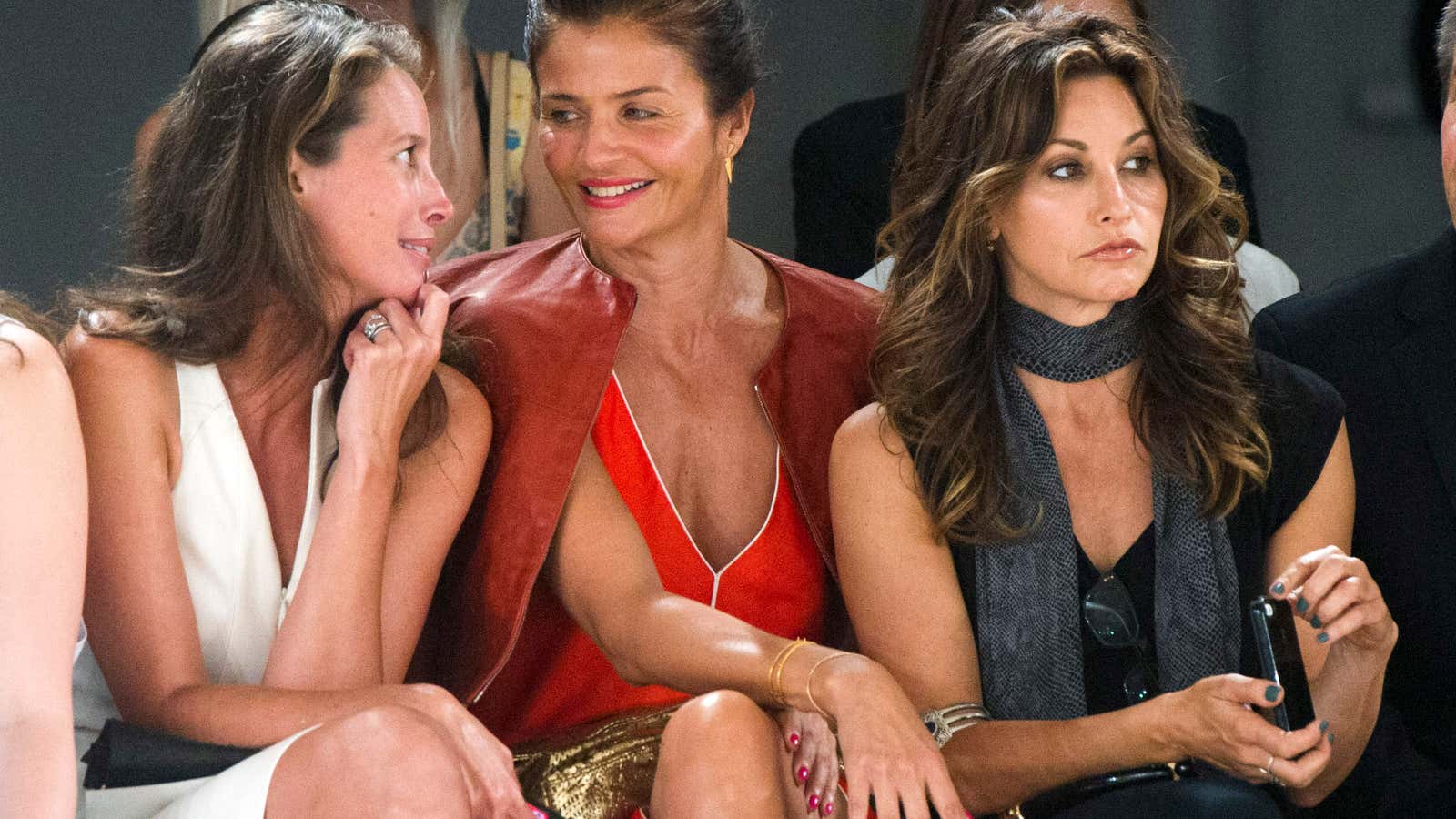Alexandra Shulman, the former editor of British Vogue, sparked online fury this week when she unleashed a bizarre barrage of criticism on Helena Christensen. She called out the 50-year-old model for the outfit she wore to a birthday party (a black lace bustier paired with high-waisted jeans).
“While men can receive sex symbol status until they are in their box, for women it’s more complicated,” Shulman pronounced. “As a society, we are frightened of sexuality that doesn’t come accompanied by fertility… When women’s bodies no longer serve any child-bearing purpose, we find flaunting them disturbing and slightly tragic. I don’t claim that this is fair. But it’s true.”
Shulman’s article in the Daily Mail was so tone deaf that it’s unsurprising it became a personal PR disaster. But the strength of the backlash to her words speaks to a deeper change that is taking hold. Because the truth is, Shulman’s comments wouldn’t have been at all out of the ordinary just a few short years ago.
After decades of gleefully harsh critiques of women’s clothing choices and bodies on the red carpet, and of magazines and blogs peddling “do’s and don’ts” and other fashion “advice” (read: dicta), it is finally becoming not-OK to tell women what they’re allowed to wear based on age, body shape—or anything else.
While I was growing up in the 1990s, the “waif” look was ubiquitous. Every model was thin. Almost every model was white. Floral dresses draped flawlessly from angular shoulders, and tiny calves disappeared into military boots.
Now, looking back, I see that this was a schizophrenic time. Girls and women were told about empowerment on the same page as diet advice. The articles praised women for pursuing their dreams. The images were of unsmiling teenagers with fragile-looking, trailing limbs.
The effect of reading such magazines was profoundly unsettling for a girl trying to understand how to be in the world: A nauseous, hungry mix, one part inspiration to four parts shame.
As Instagram and other image-heavy platforms took over the game, it became one that included public self-comparison: Not only are models being held up as the ideal for women to aspire to, but self-appointed influencers and regular people began to share their own images, asking to be rated or praised for their clothing choices or “thigh gap.”
That certainly has a toxic side. But social media has arguably also led to a democratization of imagery. Editors—as Shulman was at Vogue—no longer decide how everyone should look. Consumers find their own idols, and their choices are eclectic. Kim Kardashian, Beyoncé, Taylor Swift, and Laverne Cox are all stunning in their way, but what they are not is similar. Instagram users are curating their own feeds to include the body-positive accounts of stylish influencers such as the model Tess Holliday and the author and activist Virgie Tovar. Grace Jones at 70, rocking down the Tommy Hilfiger runway, created one of Paris Fashion Week’s most viral moments, and demonstrated how outdated Shulman’s ideas about older women and sexuality are.
Shulman has been misguided before. In 2017 she defended her magazine’s poor record of featuring women of color by saying there weren’t enough famous black models—ignoring the fact that it was magazines like hers who anointed the supermodels, and shaped the environment in which they strived for recognition.
The attack on Christensen was more personal. She called the model’s choice of garb “tacky” and accused her of “turning up as the madam in a one-horse town.” And her conflating of childbearing potential and attractiveness felt particularly antiquated.
Christensen responded to Shulman in a thoroughly 2019 way: with a breezy Instagram post of herself in the bustier, embracing two women friends. “Let’s continue to elevate and support each other, all you beautiful, smart, fun, sexy, hard working, talented, nurturing women out there,” she wrote, adding the hashtag #ooopssheworeabustieragain.
